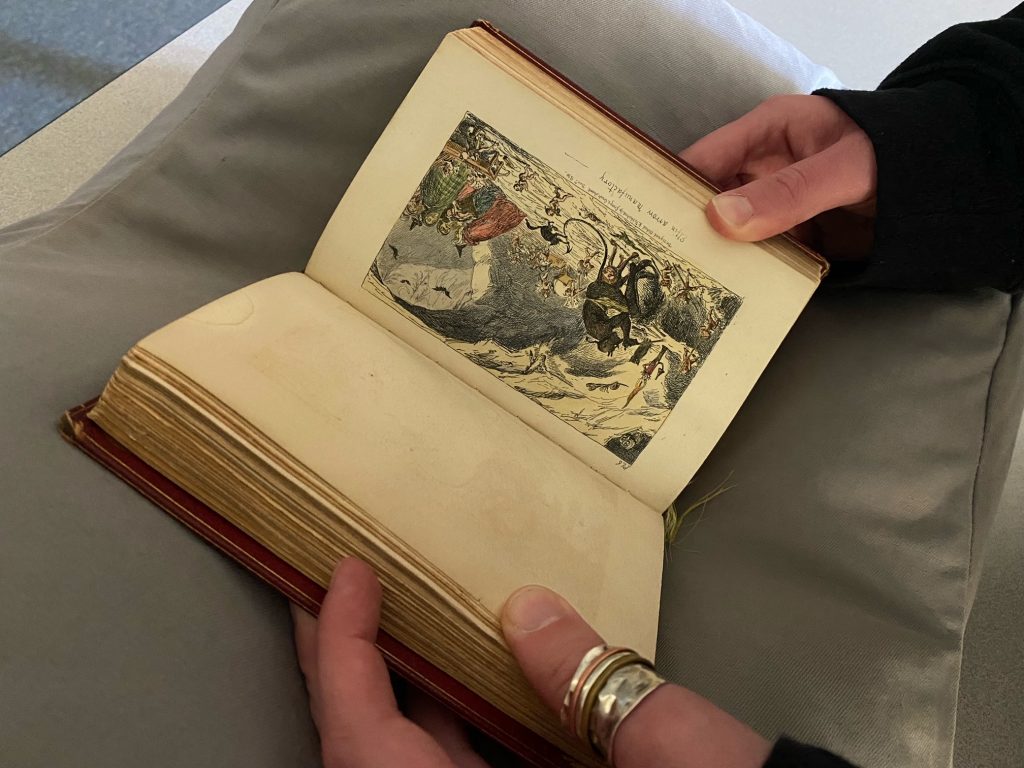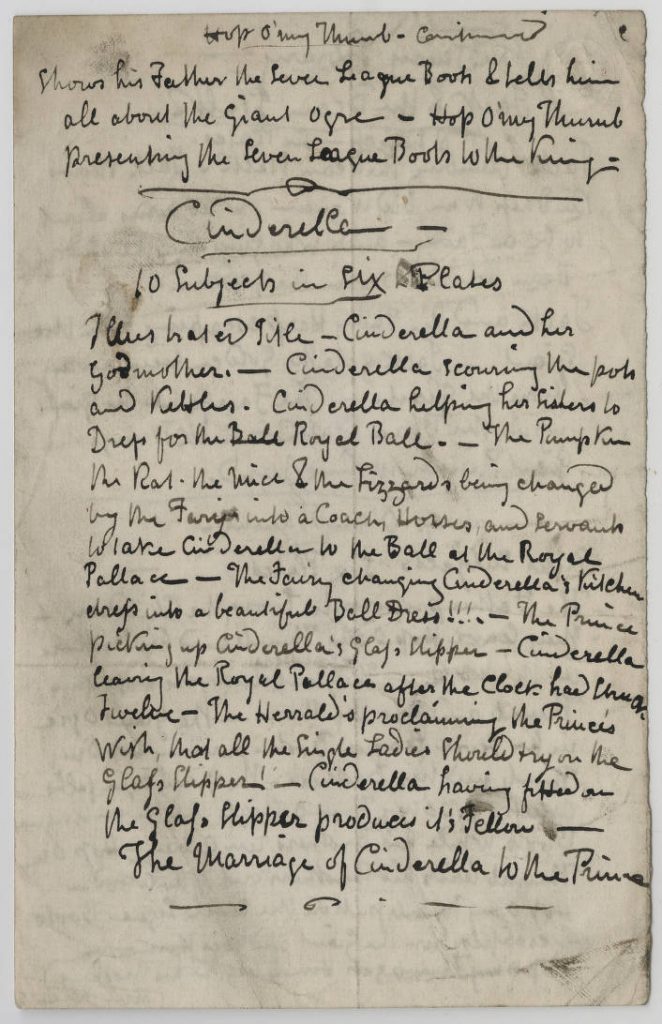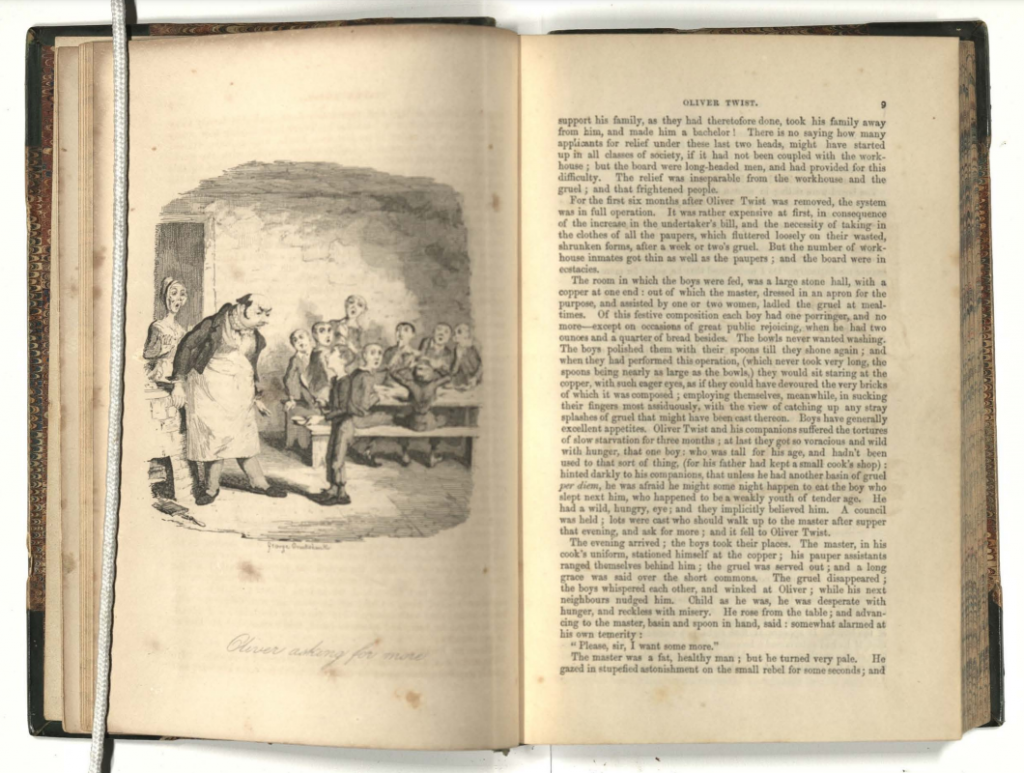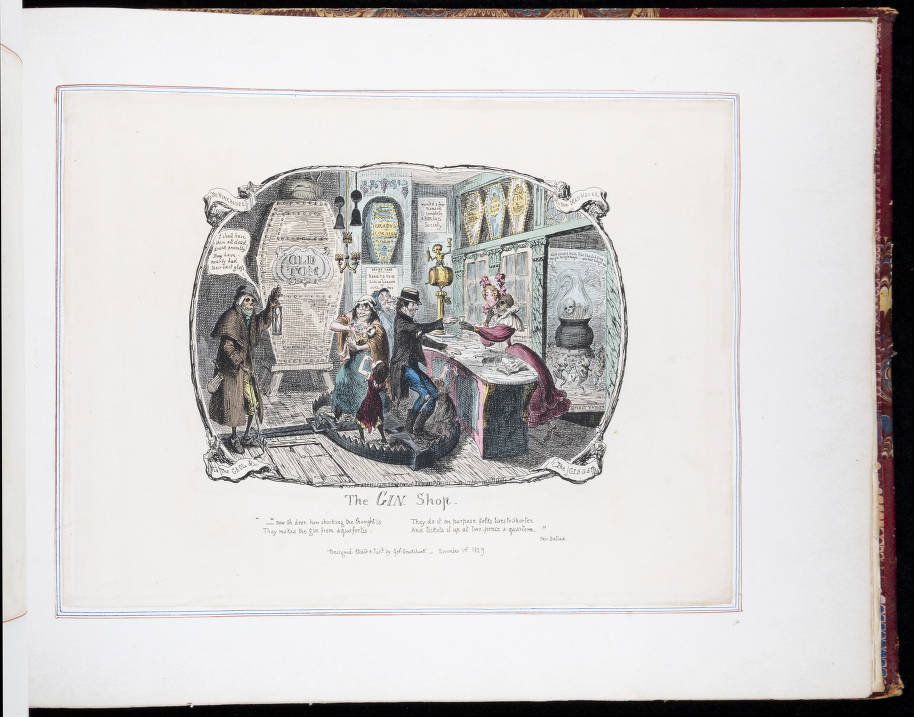One of my favorite things about working at Special Collections is the amount of strange and fascinating items around every corner. A little over a year ago, I had no idea who George Cruikshank was, let alone that Special Collections houses so many of his oddest and most interesting works. George Cruikshank was a famous illustrator and caricaturist in 19th century Britain. Among his best known works are illustrations for George Dickens’s Oliver Twist and William Harrison Ainsworth’s Rookwood. While Cruikshank was respected for his craft, he was also considered by many to be eccentric and contentious. His fervent support for the Temperance Movement often appeared in his work, for which he received much criticism. But despite his controversial reputation, Cruikshank’s legacy as an influential and talented artist has endured through the centuries.


In 2020, Lindsay DiCuirci, associate professor of English, Beth Saunders, curator and head of Special Collections, and Susan Graham, Special Collections librarian, were awarded an Adaptation Grant through the Hrabowski Innovation Fund, for their project, “Digitizing the Funny Papers: A Student-Led Digital Humanities Collaboration with UMBC Special Collections.” This project culminated in the creation of a digital exhibition built by students in English 416/616 in Fall 2022. The collection required hundreds of scans of items in the Merkle Collection of 18th and 19th century English graphic satire, home of our Cruikshank materials. Digitizing collection materials is an important part of both access and preservation, but it can be very challenging. My colleague Gabe Morrison and I were tasked with scanning the materials, and there were many days when it felt like the world was conspiring against us. Books wouldn’t stay open, the scanner kept crashing, photoshop wouldn’t load — you name it, we probably ran into an issue with it. As fun as working at Special Collections is, some days are just hard. But the pressure was on: the exhibition had to be completed by the end of the Fall semester.


NC1479.C9S3 1828
It took two semesters of digitization work to make this project possible. Gabe and I each spent many hours hunched over a computer, cropping and rotating each scan with care. When working with large tomes, even simple tasks could become unruly and overwhelming. Sometimes it can feel like our work would disappear to viewers of the collection, but, ultimately, that’s the goal: we wanted use of the digital collection to feel natural and effortless. Flipping through scans should feel as close as possible to flipping through pages in a book. We wanted Cruikshank’s illustrations to be the star of the show, not our labor.
The relentless support of our colleagues at Special Collections and Dr. DiCuirci reminded us that every challenge was a worthwhile effort. It is a privilege to work with the odd and beautiful items in our collection, to share objects that inspire so much wonder and fascination. We hope you enjoy the online exhibition, “Digital Cruikshank: Etching & Sketching in Nineteenth-Century England” — we’re so proud of how it turned out.

Thank you to Dr. Lindsay DiCuirci and the students of English 416/616 for their hard work and support. You can view the Cruikshank books and illustrations in the online exhibition and in person at Special Collections in the Albin O. Kuhn Library & Gallery. This post was written by Special Collections student assistant Sarah Nove ‘24, English.